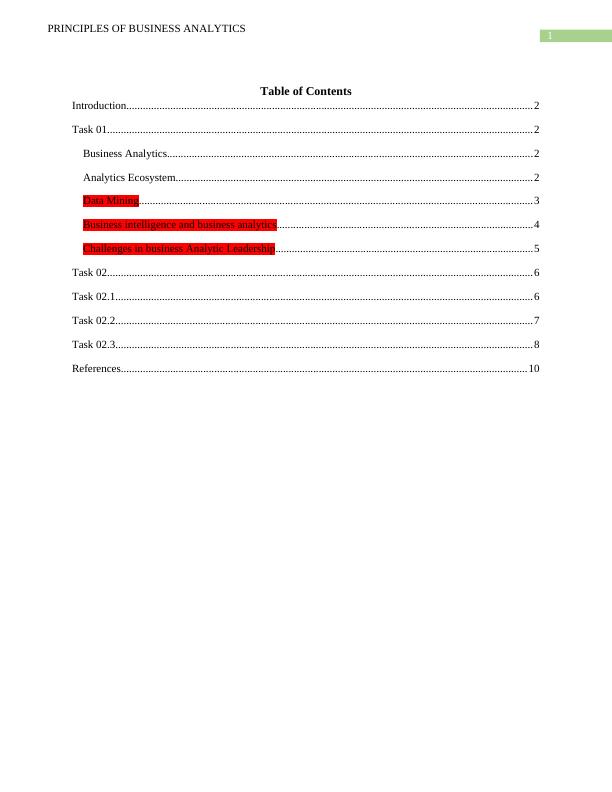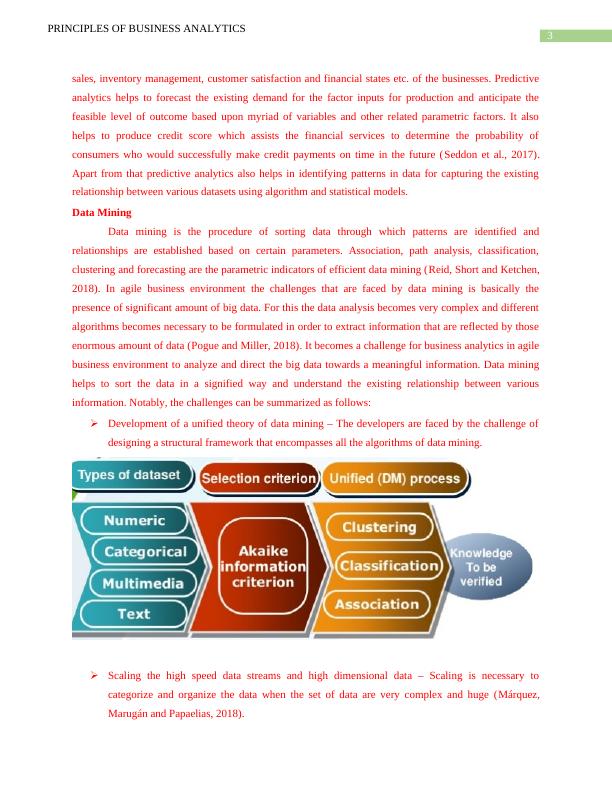Principles of Business Analytics: Importance, Ecosystem, Data Mining, Challenges, and Leadership
Write a report analyzing the moisture content of agricultural farms in New Zealand using the dataset NZ_Soils.csv
12 Pages2804 Words477 Views
Added on 2023-06-04
About This Document
This article discusses the importance of business analytics, its ecosystem, data mining, challenges, and leadership. It explains how business analytics helps in gaining insights and optimizing business procedures. The article also highlights the challenges faced by data mining in an agile business environment and the difference between business intelligence and business analytics. Additionally, it provides analytical details on frequency distribution, descriptive statistics, correlation statistics, and regression statistics.
Principles of Business Analytics: Importance, Ecosystem, Data Mining, Challenges, and Leadership
Write a report analyzing the moisture content of agricultural farms in New Zealand using the dataset NZ_Soils.csv
Added on 2023-06-04
ShareRelated Documents
End of preview
Want to access all the pages? Upload your documents or become a member.
Principles of Business Analytics
|15
|2703
|473
Principles of Business Analytics: Methods, Challenges, and Adoption
|9
|2288
|366
Using Text or Short Text Mining for Optimizing Customer Relationship Management
|16
|4209
|100
Current Business Intelligence Trends: AI, Predictive Analytics, Data Literacy, Data Visualization, SaaS and Cloud Analytics
|7
|1463
|141
Assignment Customer Analytics
|13
|3070
|217
IT Infrastructure Management: ERM, Business Intelligence, Cloud Computing, and More
|11
|1585
|92




